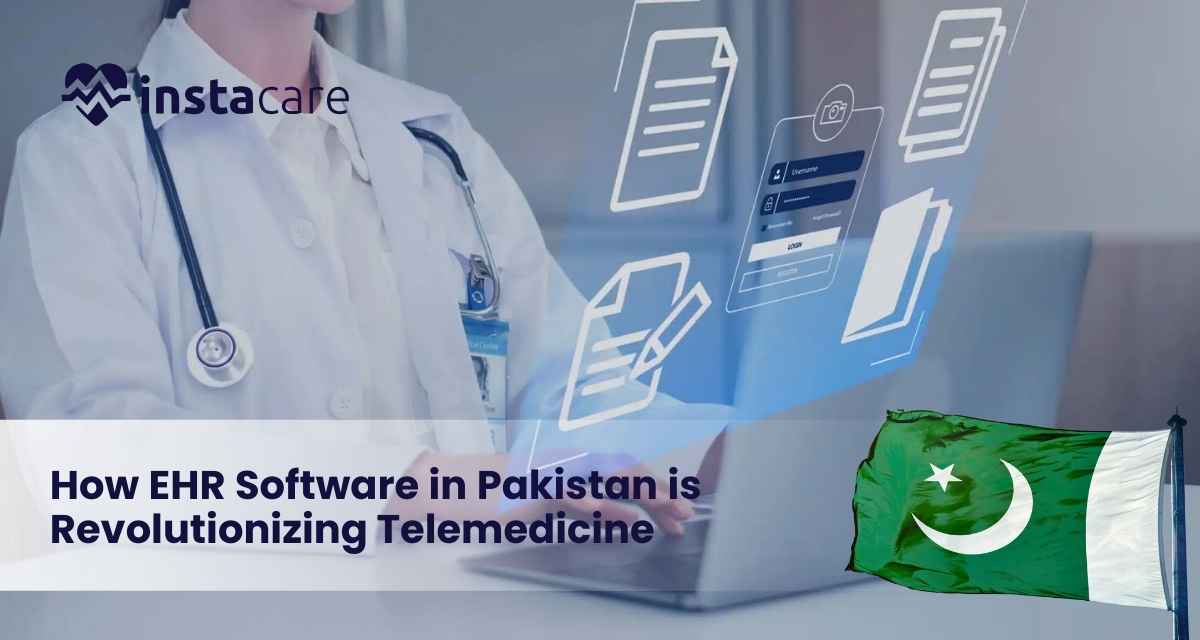Last updated on Wednesday, 16, October, 2024
For the last few years, great development has taken place in Pakistan in the health care sector with electronic record EHR software now being implemented in telemedicine practices. This is changing patient care and making easy and much easier access to healthcare all over the entire nation. In this article, we shall discuss how EHR software transforms telemedicine in Pakistan, problems it solves, and its impact on both providers and patients.
Table of Contents
Rise of Telemedicine in Pakistan
Telemedicine is one of the most needed answers to a number of health issues that have prevented areas in Pakistan. Many of the rural people do not get quality better advanced care; telemedicine will take the patients to the health providers. COVID-19 propelled the use of telemedicine solutions as healthcare professionals were compelled to come up with innovative means to give remote care.
What is EHR software?
EHR software is actually the electronic version of a paper patient chart and forms the heart of modern healthcare. It offers real-time, patient-centered records and allows information to flow instantly and securely into the hands of the right users. EHRs are akin to the clinician’s work and are designed for and to improve patient care and enhance the efficiency of healthcare.
Key feature of EHR software in telemedicine
Patient Data Management: EHRs from the electronic health records systems used by healthcare providers ensure that all of a patient’s medical history, drugs, lab results, and treatment plans are safely recorded and managed to be reviewed with ease at any telemedicine consultation.
- Interoperability: The current EHR systems are designed to be interoperable; that is, there should be some form of communication between different providers about the patient’s information without much hassle. In telemedicine, the specialists may need to refer to the full medical history of the patient.
- Remote Monitoring: The EHR application may interface with remote monitoring equipment and enable healthcare professionals to monitor patients’ vitals and health data that lead to improved care.
- EHRs make it easy to schedule telemedicine appointments and, therefore, minimise the administrative burdens on health care workforce maximizes patient satisfaction.
EHR Software enhances billing and insurance management.
EHR software boasts acceleration features for billing procedures since they enable health care providers to track the claims and payments associated with telemedicine services.
EHR Software Improves Patient Care
Telemedicine represents a profoundly important advantage EHR software provides in terms of access to healthcare, especially for rural and other under-served areas. For example, patients who might travel very long distances to receive treatment can now receive care from their homes. It is much more advantageous in chronic disease management where it is imperative to sustain the follow-up patterns via regular monitoring or check-ups.
EHR systems allow the health practitioners to formulate specific planning treatment using detailed information relating to the patients. In doing telemedicine consultations, doctors can access the patients’ medical histories efficiently hence making informed decisions concerning the relevant treatment areas. Personalized plans increase the outcome for the patients and give them a more enhanced experience.
Good Communication
Application of EHR software improves communication between a patient and health care provider. Patients can communicate through messages, updating the health care provider about the changes in their health condition and seeking information via the safe portal. Continuous communication creates a connection and kind sense of trust that is an important aspect in the administration of successful healthcare.
EHR Software Challenges
Data Security and Privacy
The primary issue to telemedicine is the safety and confidentiality of patient data. EHR systems are designed to be very safe; they provide protection of highly confidential information in a secure manner. Encryption and access controls, and even secure communication channels ensure confidentiality and availability of it for authorized persons alone.
Reduction of Administrative Burden
Before EHR software became the norm, the health care provider to a large extent faced administrative burdens characterized by paper works and manual record-keeping. EHR systems come with the automation of many such tasks so that the health care provider spends maximum time caring for a patient rather than performing administrative tasks.
Making Work process Simple
By using EHR software, the necessary information relating to a patient can be accessed by the doctors promptly. In telemedicine consultations, time available hardly ever is so long. Therefore, good EHR software plays a very important role in the life of doctors as it allows them to make appropriate decisions in less time.
The Future of EHR Software in Telemedicine in Pakistan
The future of EHR software in telemedicine is bright as several technologies continue to develop and more and more providers together with their patients embrace telemedicine. Some of the trends that will shape the ways things will be include the following:
Future Most Likely Trends
The following are some of the expected most likely trends that will shape the ways things would be for telemedicine in relation to EHR software; these include:
- Artificial Intelligence Integration: The integration of AI into EHR software would provide better diagnostic capabilities and also predictive analytics that will help healthcare providers to make the best decisions.
- Mobile Health Applications: As the usage of smart phones is rising in Pakistan, mobile health applications will be interfaced with EHR systems so that an individual gets maximum access for proper management of their health.
- Regulation of Telemedicine: With the increasing trend of telemedicine, the regulation on quality care and patient safety will exist. The EHR software will always play a central role in ensuring that such regulation takes place.
- Patient Engagement Tools: One would expect more EHR systems to have greater implementations of patient engagement tools, such as reminding a patient about medication or appointments set to help the patient adhere more strictly to follow-up treatment programs.
Conclusion
EHR software revolutionized Pakistan’s telemedicine delivery of health care. Increased access to care, improved communication, and simplification of work flows are some of the critical factors that EHR systems play in the health care sector. The current improvement in technology ensures that the likelihood of using EHR software in improving telemedicine practices in Pakistan will be increased.
In this regard, the implementation of EHR software is not merely a high-tech advancement but a step towards an efficient, accessible, and patient-centered healthcare system. Hope for the future of Pakistan’s healthcare scenario comes because this country continues embracing innovation.
FAQs
1-What are the two significant advantages of using telemedicine in EHR software?
All in all, EHR brings improvement in managing the data of the patients, makes possible a better level of communication between the patient and the provider, helps in streamlining business processes, and guarantees data protection. Moreover, it is helpful in personalizing the treatment plan and facilitates better access to other health care.
2-How is patient data secured by EHR software?
EHR systems are embedding encryption, access controls, and secure communication channels to ensure handling of sensitive information related to the patient in a safe way. This can make unauthorized parties incapable of gaining access to the data while maintaining confidentiality and adhering to the compliance of regulations.
3-What is the future of EHR software in telemedicine in Pakistan?
From AI integration trends to changes in telemedicine laws; from mobile health applications to tools for patients’ engagement, a bright future awaits EHR software in telemedicine in Pakistan.”.



